Lean Muscle Workouts
 No matter where you live, if you’re working out, you probably want to burn fat and build muscle tissue. Clients in Irvine, CA, who want to lose weight, often use a personal trainer to learn lean muscle workouts that help them do both. While doing any type of workout will help you lose weight, not all workouts will help you build muscles at the same time. Building muscle tissue is important. The more muscle tissue you have, the easier it is to keep weight from returning in the future. Muscle tissue requires more calories for maintenance than muscle tissue does.
No matter where you live, if you’re working out, you probably want to burn fat and build muscle tissue. Clients in Irvine, CA, who want to lose weight, often use a personal trainer to learn lean muscle workouts that help them do both. While doing any type of workout will help you lose weight, not all workouts will help you build muscles at the same time. Building muscle tissue is important. The more muscle tissue you have, the easier it is to keep weight from returning in the future. Muscle tissue requires more calories for maintenance than muscle tissue does.
It all starts with a good strength building program.
Cardio workouts do burn calories, but those calories come from both fat and muscle tissue. It actually can reduce the amount of muscle tissue you have and lower your metabolism. Strength building exercises, like lifting weights also burns calories, but it builds muscle tissue at the same time. The effects of workout increase your metabolism for hours after the workout, too. What are the best lean muscle tissue building exercises? The best ones are the ones you do consistently. Do weight training two to three times a week. Don’t do strength training every day. Give yourself a day or two rest in between strength training sessions.
Strength training can include pumping iron, resistance bands, HIIT workouts, bodyweight exercises or even power yoga.
While pumping iron is often what people initially identify as strength training, lifting weights is just one way to build lean muscle mass. HIIT workouts can give you an aerobic workout, while you’re building muscle tissue, too. You can even vary it to include flexibility training. Bodyweight exercises are excellent for muscle building, particularly for those who can’t make it to the gym. Resistance bands are also an inexpensive, easy to store addition to anyone’s at home workout. They’re great if you travel frequently.
Strength training should include both isometric and isotonic exercises.
Isometric exercises include the plank or a glute bridge. Isotonic workouts are squats, crunches and pushups. In isotonic exercises the muscles change length, while in isometric exercises, they don’t change length as they work against a force, think plank where you hold the position. Alternate your workout based on how you feel. If your joints are feeling stiff and sore, choose the isometric workouts where you get into position and hold.
- Don’t worry about increasing weights, increasing reps works just as well. You can get results from either increasing weight and doing the same number of reps or increasing reps. Both methods provide the same results.
- When you do compound workouts, you’re burning more calories, while building lean muscle tissue for several muscle groups. Think squats, pushups and deadlift.
- If you can’t do the exercise yet, modify it until you’re stronger. If you haven’t worked out in a long time, some of the best workouts for lean muscle mass might be too difficult. Work your way up to them. Do modified, bent-knee pushups until you can do regular ones or step ups before box jumps.
- Improve your diet. Eating a healthy diet is important to build lean muscle mass. You need extra protein, but also all the nutrients necessary for building muscle tissue. That means plenty of vegetables and fruits.

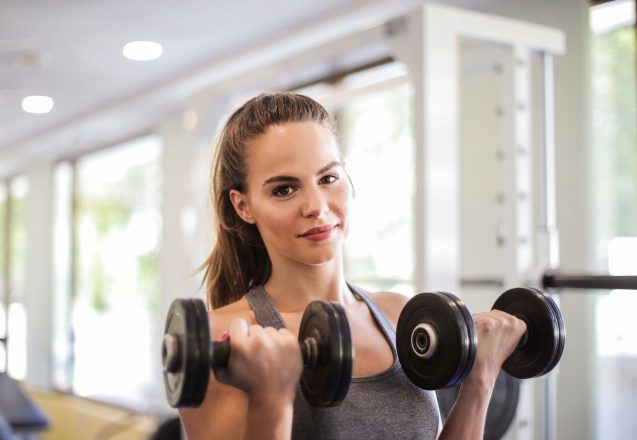

 There’s no way to do a spot exercise and expect fat to come off just that spot. It’s true whether you’re talking about belly fat, inner thigh fat or fat on your booty. When you lose weight, it comes off your entire body, no matter how many spot exercises you do. However, exercise can tone the muscle under the fat to give some of the results you’ve hoped to achieve. It won’t make you lose weight just on your inner thighs, but will help improve the appearance.
There’s no way to do a spot exercise and expect fat to come off just that spot. It’s true whether you’re talking about belly fat, inner thigh fat or fat on your booty. When you lose weight, it comes off your entire body, no matter how many spot exercises you do. However, exercise can tone the muscle under the fat to give some of the results you’ve hoped to achieve. It won’t make you lose weight just on your inner thighs, but will help improve the appearance.
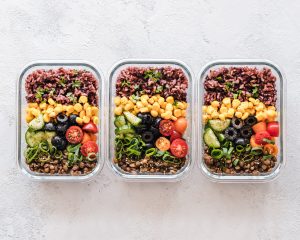 If you’re trying to lose weight or just get out of the junk food habit, menu planning and food prep should be top priority. Too often plans for healthy eating go down the drain the first time you have to stop at the store on the way home from work or can’t figure out what to make for supper. Instead of getting groceries, getting take-out sounds a lot better! That’s easy to understand in today’s busy world. Here are some ways to avoid that hassle and make eating healthy a breeze.
If you’re trying to lose weight or just get out of the junk food habit, menu planning and food prep should be top priority. Too often plans for healthy eating go down the drain the first time you have to stop at the store on the way home from work or can’t figure out what to make for supper. Instead of getting groceries, getting take-out sounds a lot better! That’s easy to understand in today’s busy world. Here are some ways to avoid that hassle and make eating healthy a breeze.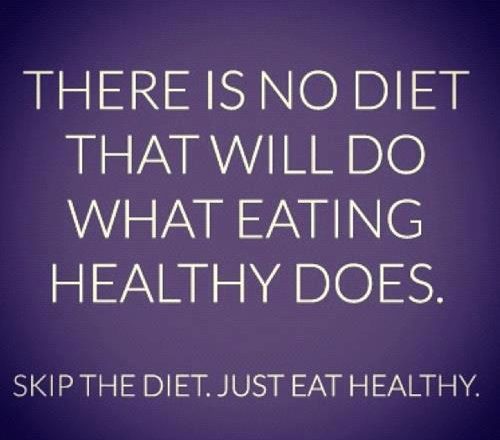
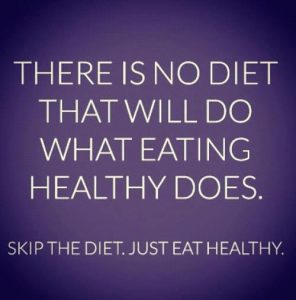 Most of our clients in Irvine, CA, use their trainer and our expertise to find the right diet, if you’re working on your own, it’s not nearly as easy. Before you begin, you need to know what a healthy diet consists of and what your personal goals are. We consider food sensitivities, so should you. No matter how great a specific food is, if it doesn’t agree with you, it shouldn’t be part of your diet. There are some basics for any healthy diet.
Most of our clients in Irvine, CA, use their trainer and our expertise to find the right diet, if you’re working on your own, it’s not nearly as easy. Before you begin, you need to know what a healthy diet consists of and what your personal goals are. We consider food sensitivities, so should you. No matter how great a specific food is, if it doesn’t agree with you, it shouldn’t be part of your diet. There are some basics for any healthy diet.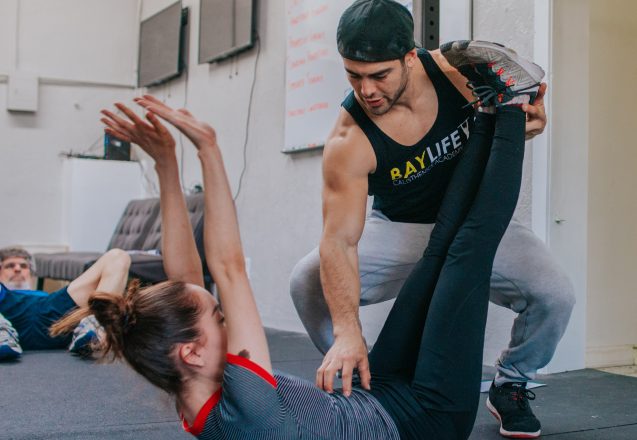
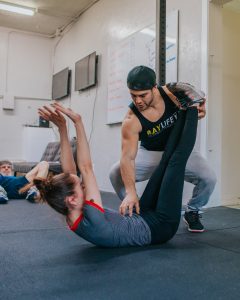 It’s important to have the best trainer to achieve your goals, especially since you’re putting in time and money to get results. There are questions you should ask your personal trainer to make certain that the effort you put in will get the results you want. Not all trainers are the same. Some have the top credentials and get results quickly, while others don’t. The first question you need to ask is about the trainer’s qualifications. What type of credentials does the trainer have and what certifications? Make sure those qualifications are respected in the field and that the trainer also keeps abreast of the latest research.
It’s important to have the best trainer to achieve your goals, especially since you’re putting in time and money to get results. There are questions you should ask your personal trainer to make certain that the effort you put in will get the results you want. Not all trainers are the same. Some have the top credentials and get results quickly, while others don’t. The first question you need to ask is about the trainer’s qualifications. What type of credentials does the trainer have and what certifications? Make sure those qualifications are respected in the field and that the trainer also keeps abreast of the latest research.
 If you’re wondering what angiogenesis, all you have to do is break the word apart and identify the meaning of each part. Angio relates to the blood vessels and genesis is a suffix that means the beginning or development of something. Put them together and they mean the study of how blood vessels develop. Throughout your life, capillaries grow and diminish, based on the need at the time. If you have a wound, more capillaries grow to help it heal. That’s caused by a release of chemicals that induce the growth or splitting of blood vessels to create more.
If you’re wondering what angiogenesis, all you have to do is break the word apart and identify the meaning of each part. Angio relates to the blood vessels and genesis is a suffix that means the beginning or development of something. Put them together and they mean the study of how blood vessels develop. Throughout your life, capillaries grow and diminish, based on the need at the time. If you have a wound, more capillaries grow to help it heal. That’s caused by a release of chemicals that induce the growth or splitting of blood vessels to create more.
 Some people exercise to shed pounds and look better, while others may just love the boost of energy they get and feeling good. No matter what the reason you workout, you get the same results, exercise improves your health. It builds your energy and makes changes to your body that can add years to your life. Your body has five systems that when functioning properly, keep you healthy. They’re microbiome, angiogenesis, stem cells, immune system and DNA protection. Exercise helps all those areas.
Some people exercise to shed pounds and look better, while others may just love the boost of energy they get and feeling good. No matter what the reason you workout, you get the same results, exercise improves your health. It builds your energy and makes changes to your body that can add years to your life. Your body has five systems that when functioning properly, keep you healthy. They’re microbiome, angiogenesis, stem cells, immune system and DNA protection. Exercise helps all those areas.
 If you’re experiencing a gnawing sensation that something is wrong, but ignore it or can’t quite figure out why you’re having that feeling, you aren’t tuned into your body. There’s a lot of reasons to get in touch with the messages your body sends you. It could be it needs something to remain healthy or get healthy. It could be a warning to investigate issues before they become too advanced to handle or help in losing weight. Those are just a few situations that learning more about your body can help and exercise can help you tune in to your body. I’ve heard it many times from clients in Irvine, CA. Once they begin the program of exercise, they are more aware of what and when they eat and when to take action if they start to feel ill.
If you’re experiencing a gnawing sensation that something is wrong, but ignore it or can’t quite figure out why you’re having that feeling, you aren’t tuned into your body. There’s a lot of reasons to get in touch with the messages your body sends you. It could be it needs something to remain healthy or get healthy. It could be a warning to investigate issues before they become too advanced to handle or help in losing weight. Those are just a few situations that learning more about your body can help and exercise can help you tune in to your body. I’ve heard it many times from clients in Irvine, CA. Once they begin the program of exercise, they are more aware of what and when they eat and when to take action if they start to feel ill.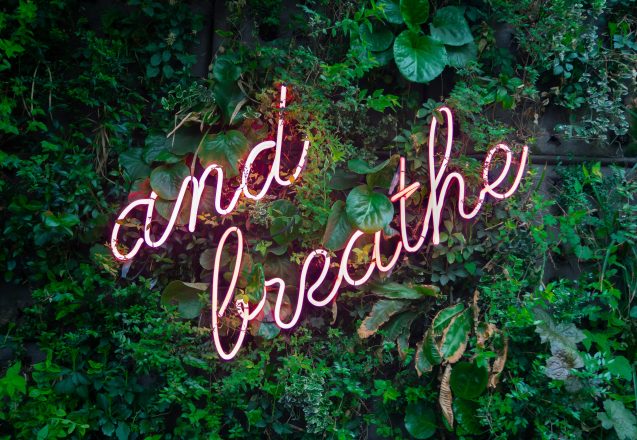
 There’s a reason to improve oxygen supply to cells. It helps boost your energy level, improves your cognitive functioning and also helps you look and feel better. Improved oxygen levels can improve your breathing, help prevent headaches and that dizzy feeling. However, there’s more than it can do than just that. It improves your overall energy level, too. Today, there’s even skin boutiques that offer oxygen inhalation therapy to improve the condition of the skin and prevent premature skin aging.
There’s a reason to improve oxygen supply to cells. It helps boost your energy level, improves your cognitive functioning and also helps you look and feel better. Improved oxygen levels can improve your breathing, help prevent headaches and that dizzy feeling. However, there’s more than it can do than just that. It improves your overall energy level, too. Today, there’s even skin boutiques that offer oxygen inhalation therapy to improve the condition of the skin and prevent premature skin aging.